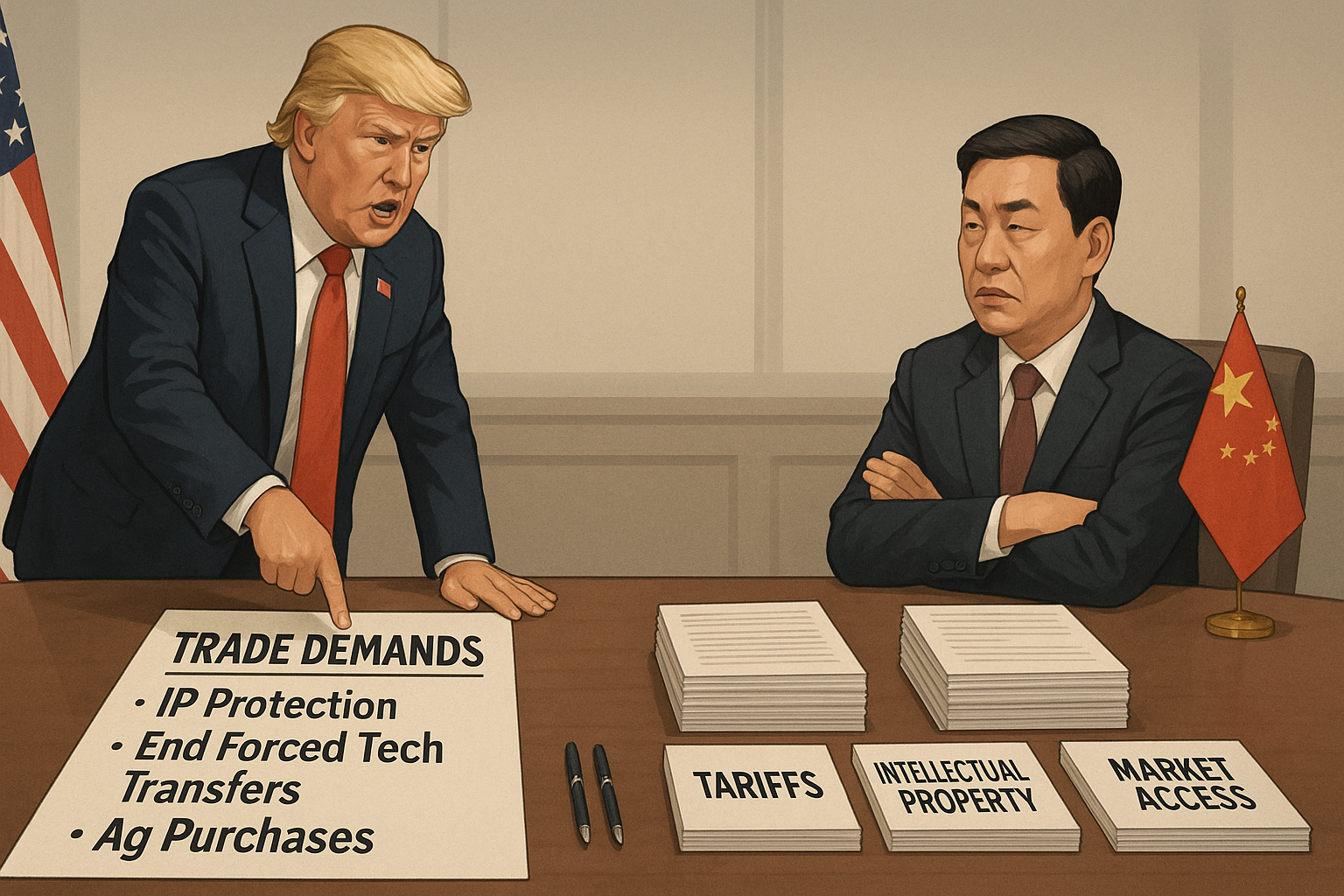President Trump has issued what amounts to a greatest-hits compilation of demands to China ahead of renewed trade negotiations, setting the stage for what could be—or might not be—a breakthrough in the seemingly endless economic standoff between the world's largest economies.
The markets, predictably, responded with their usual schizophrenic optimism. I've watched this pattern repeat itself for months now: threat, dip, "talks scheduled," rally, breakdown, repeat.
"We need fair and reciprocal trade," Trump told reporters yesterday, before launching into familiar complaints about intellectual property theft and forced technology transfers. Nothing new there.
Look, the core issues haven't changed since this saga began. Trump wants better IP protections, an end to forced tech transfers, massive agricultural purchases, and broader market access for American companies. The Chinese want... well, to give up as little as possible while ending the tariff pain.
Having covered trade disputes since the NAFTA renegotiations, I can tell you there's always a gap between public posturing and private flexibility. But this particular dance feels different—more existential, somehow.
What makes these negotiations fascinating (at least to trade policy nerds like me) is the two-level game being played. There's the international negotiation happening across the table, sure. But there's also the domestic political calculation each leader must make.
Trump needs something he can sell as a win to his base—particularly manufacturing workers in states like Pennsylvania and Michigan. But he also needs market stability. His reelection prospects likely depend on it.
Xi faces his own constraints. Chinese leadership can't appear to cave to foreign pressure. National pride is at stake. Yet their economy shows signs of strain, with manufacturing numbers that would make any leadership nervous.
The timing couldn't be more loaded.
With the 2020 election approaching, conventional wisdom suggests Trump should want a deal—any deal—to stabilize markets and boost economic confidence. But when has this president ever followed conventional political wisdom? His comfort zone appears to be confrontation, not compromise.
(I spoke with three former USTR officials last week who all expressed the same bewilderment at how long this has dragged on. One called it "the never-ending story, but with billions at stake.")
The market response to all this has become almost comical in its predictability. I've watched traders literally lunging for their phones when the president tweets anything containing both "China" and "deal" in the same 280 characters. It's created a strange new form of volatility that didn't exist three years ago.
What's most telling, though, isn't happening on trading floors but in corporate boardrooms. Companies aren't waiting for resolution anymore. They're permanently restructuring supply chains, making strategic shifts that won't simply reverse if a deal materializes tomorrow. The damage, in some sectors, may already be permanent.
Will a deal eventually happen? Probably. Maybe. Who knows?
The optimistic take is that both sides ultimately want resolution. The pessimistic—and increasingly plausible—view is that we're witnessing not a negotiation but a fundamental economic decoupling that will reshape global trade patterns for decades.
Either way, don't mistake motion for progress. We've seen this movie before—talks resume, hopes rise, something derails the process, and we're back where we started.
As one exasperated investment banker told me yesterday, "I've stopped trying to predict the outcome. I just trade the pattern now."
The merry-go-round continues. Same horses, same music... just increasingly queasy riders.
